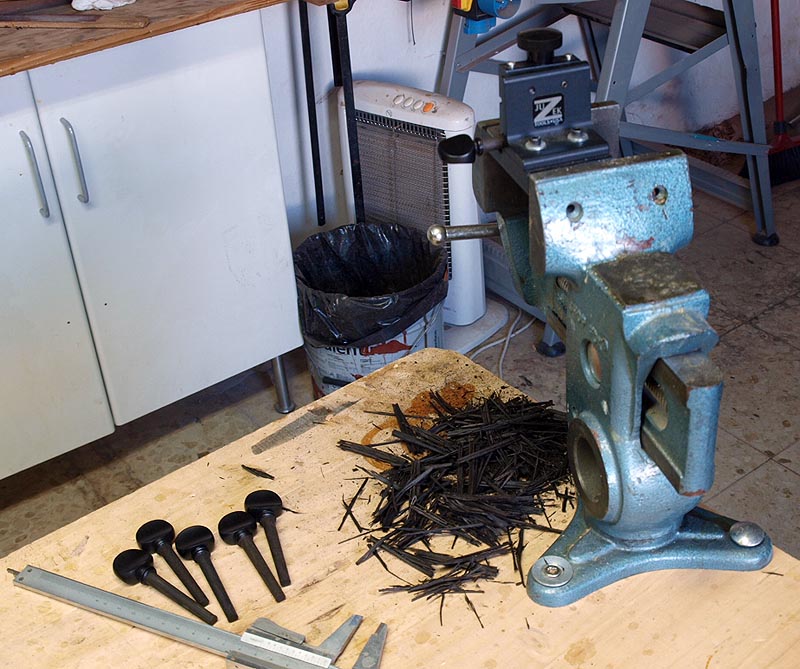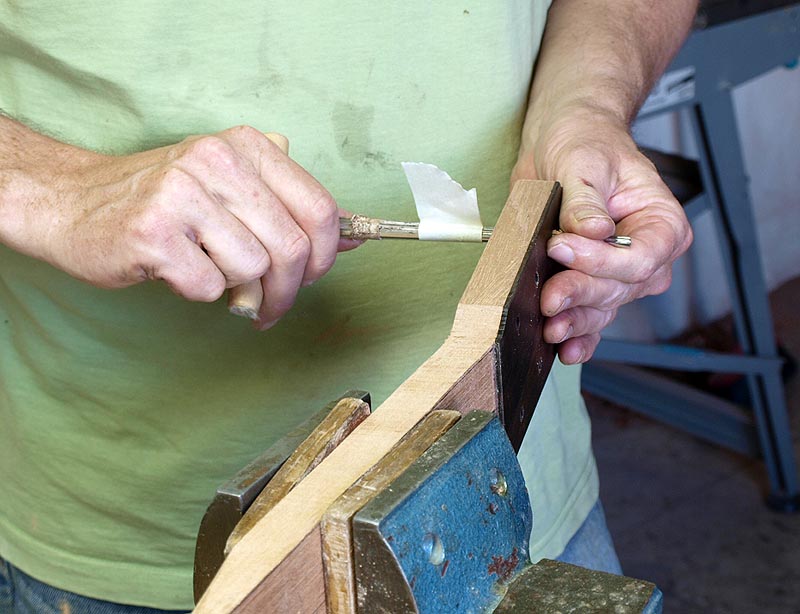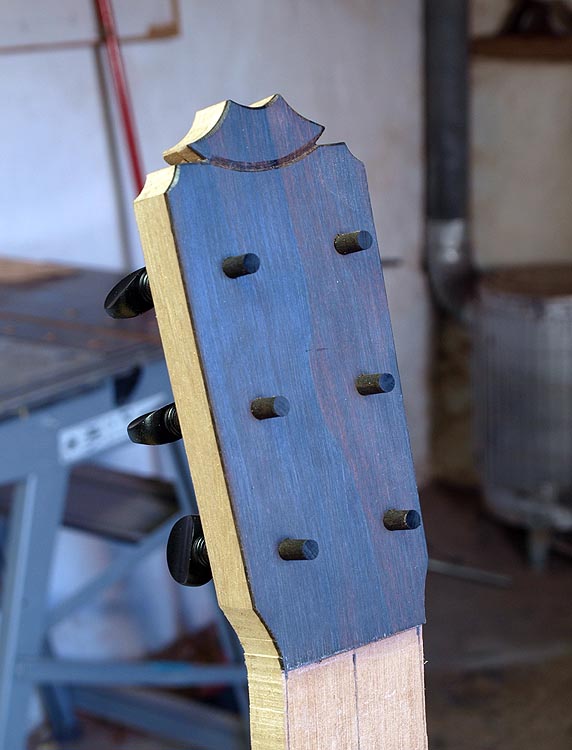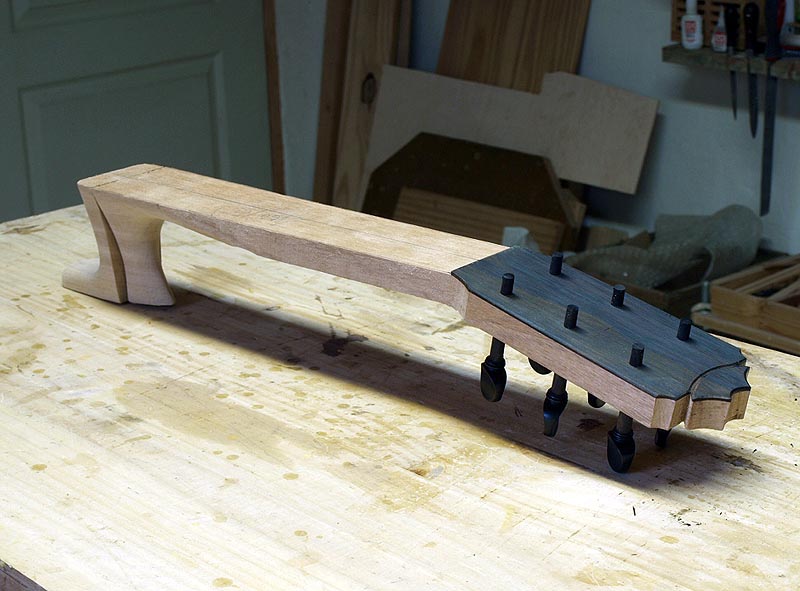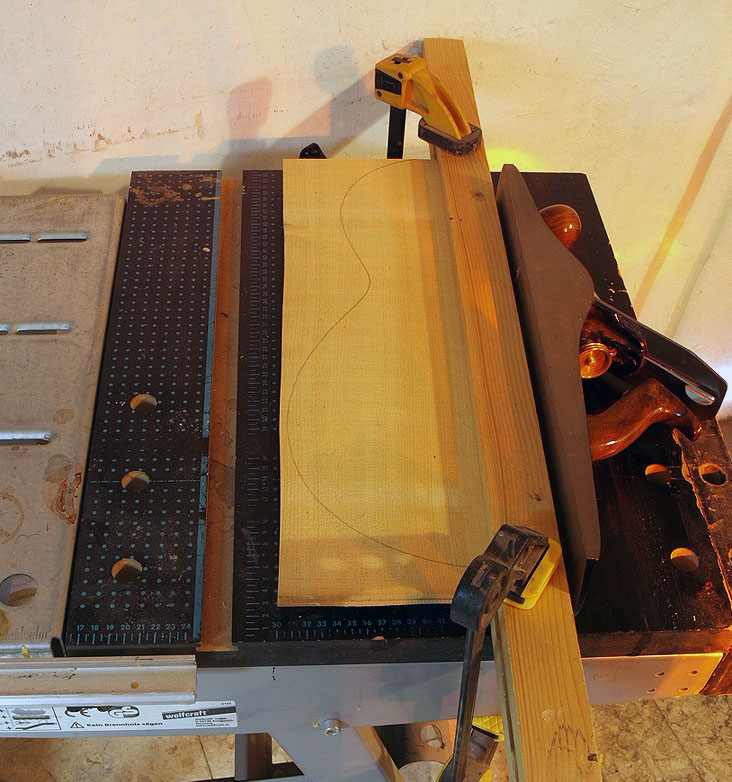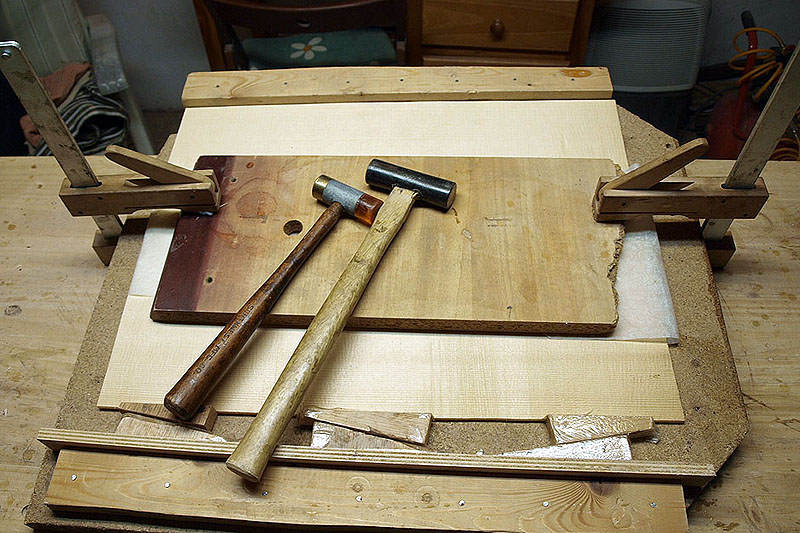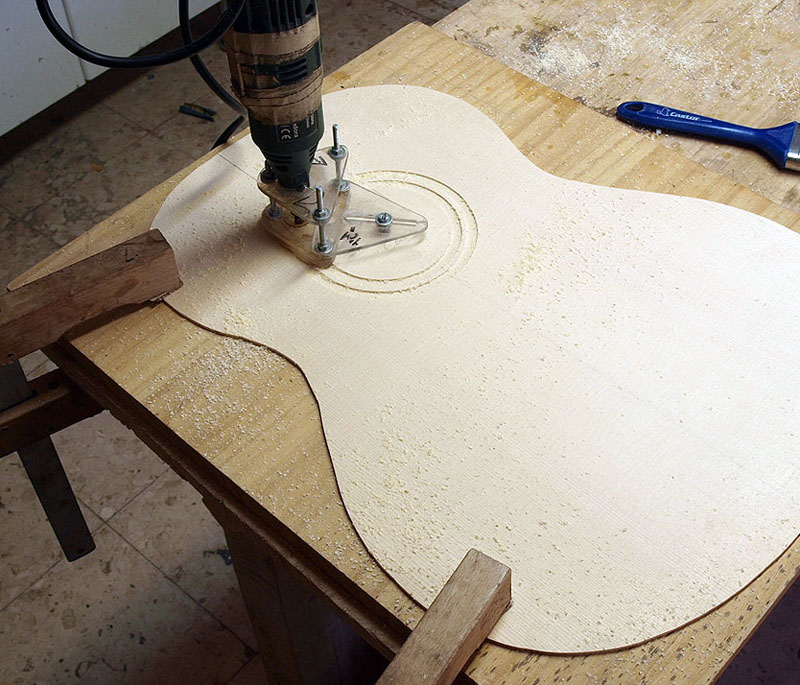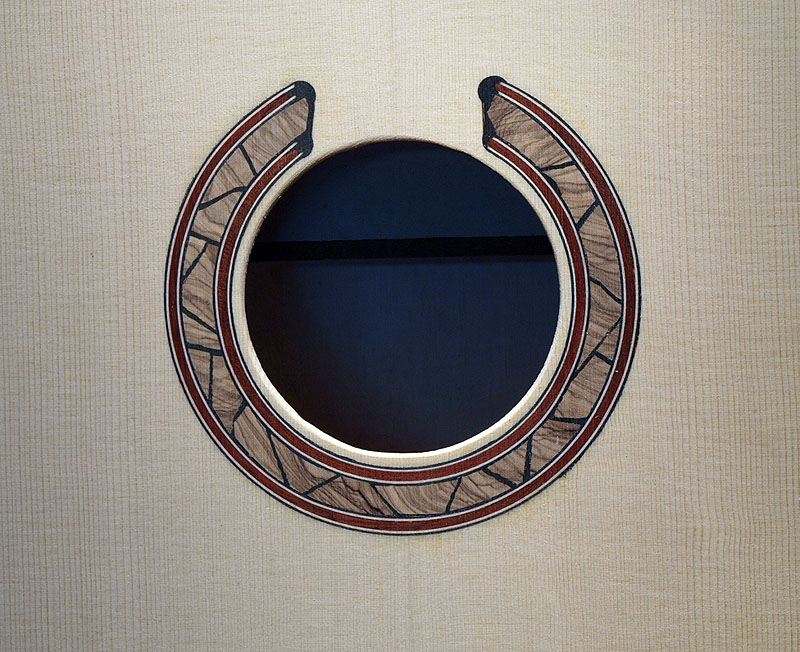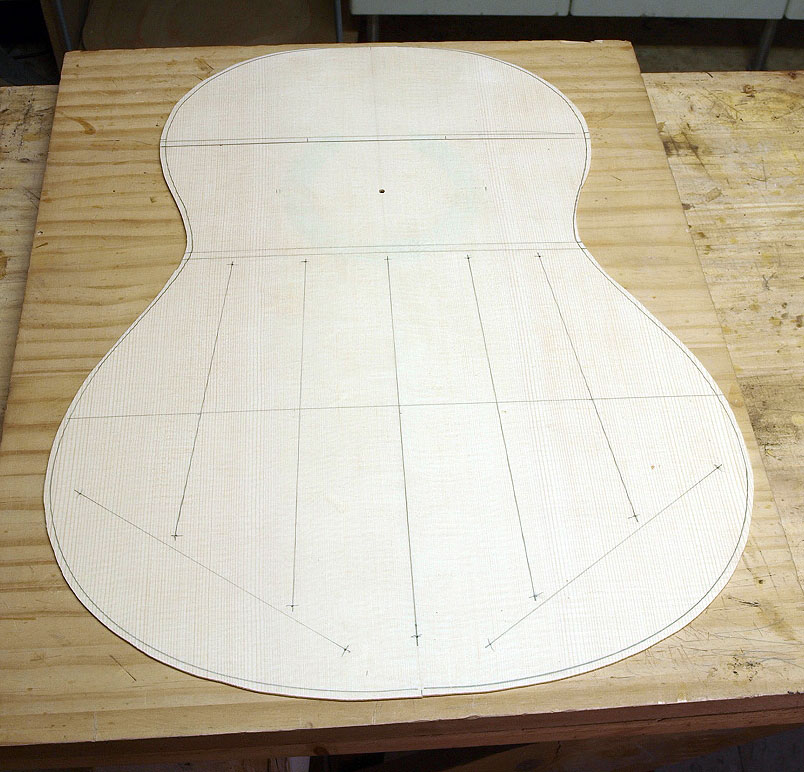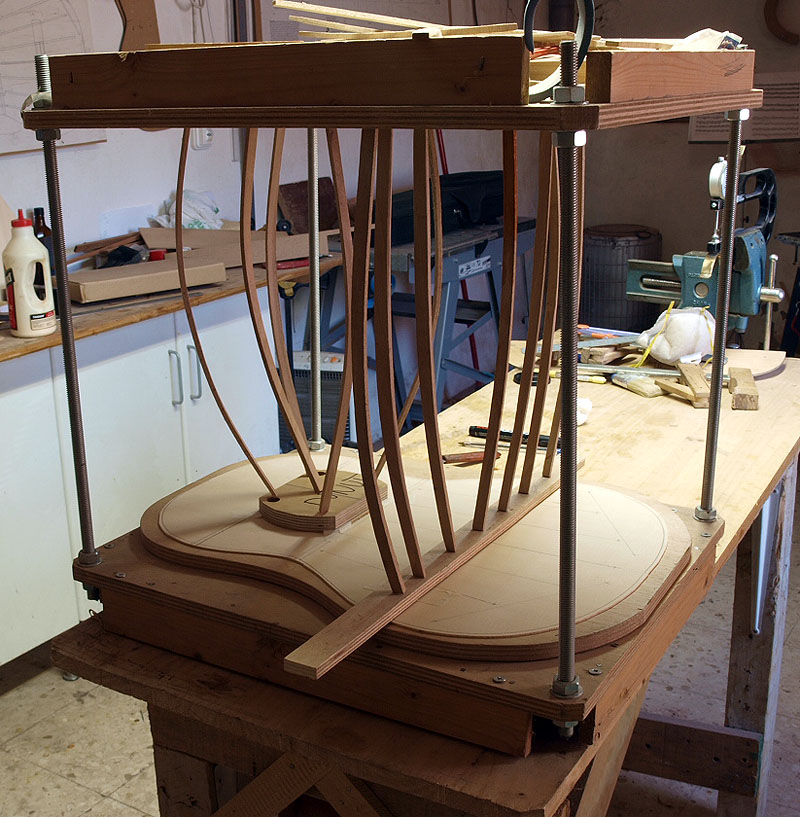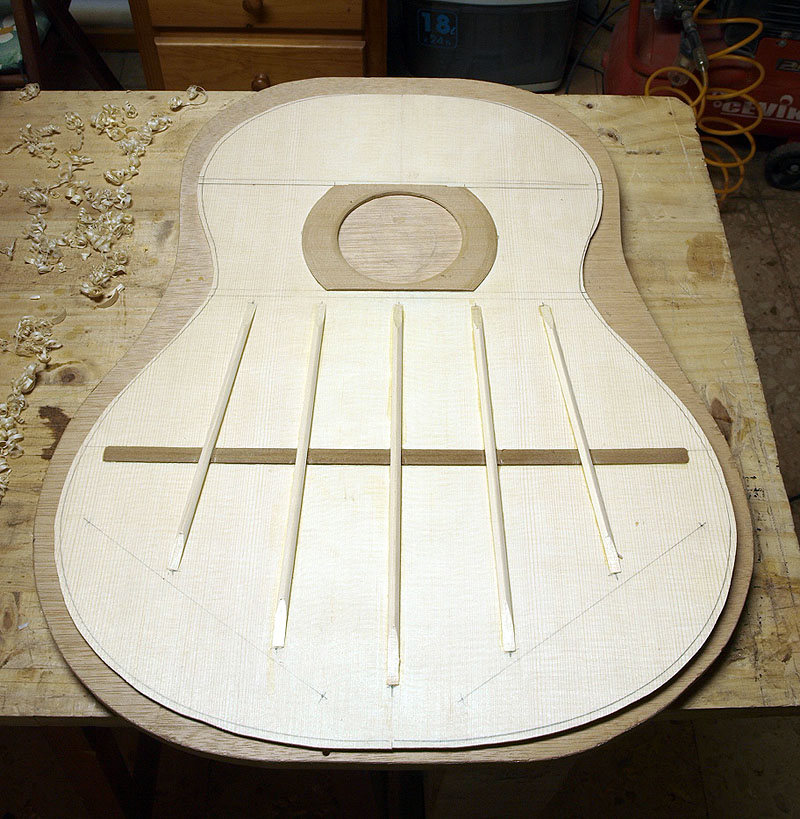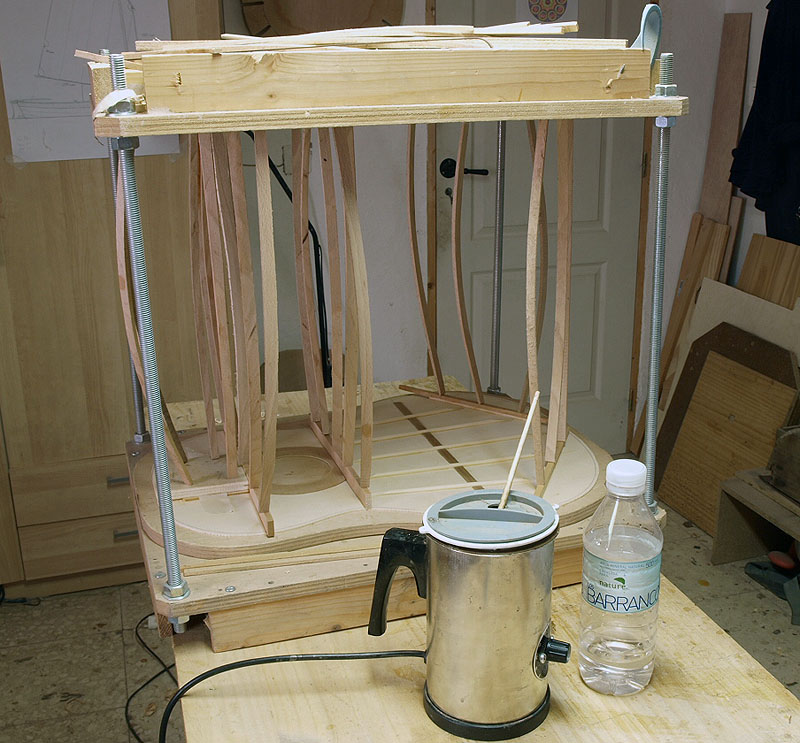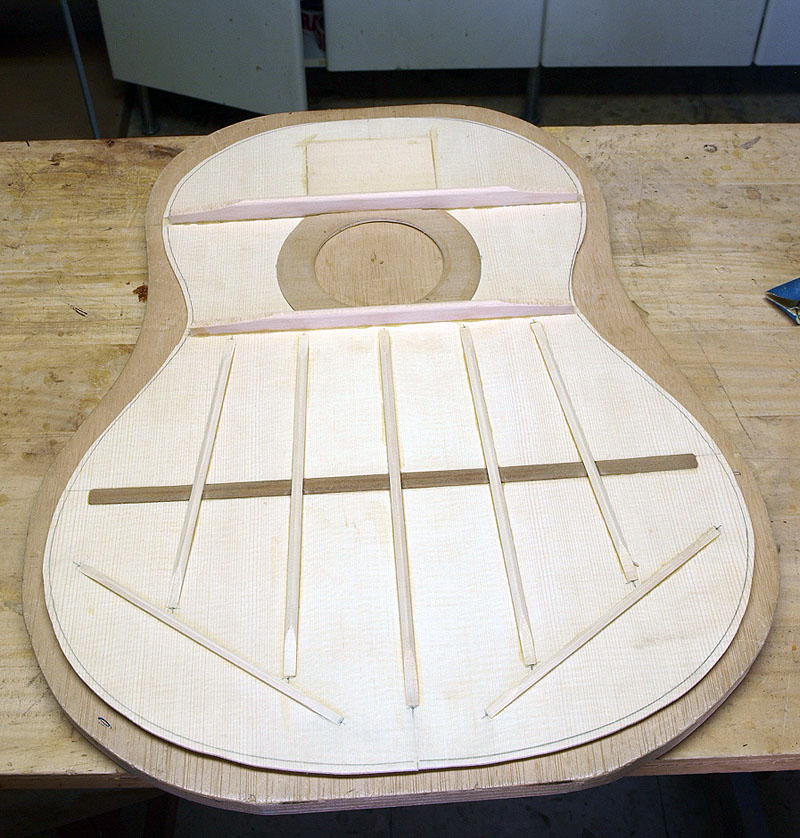|
Anders Eliasson -> RE: Building Guitar Number 100. (Sep. 19 2012 7:40:18)
|
Taking the soundboard down to its (almost) final thickness
Soundwise, this is one of the most important steps in making a good guitar and I only do it when I feel good. I have to be tuned in myself in order to tune the soundboard.
two of my most important tools are a weight, to weigh the thing and a reference soundboard, which is a soundboard that I know, with a rosette inlayed. That I flex together with the soundboards that I´m working on. Then comparing and weighing I reach the point where I say thats it.
The thickness caliper is, of course, also important, but over the years, I´ve learnt not to use it to much, because each piece of wood is different and one piece of spruce ends up with 2,1mm while another ends up with 2,3mm and important... The thin one doesnt have to be the best. Not at all. What is important is to get it right. The thickness caliper I use mostly to make sure the soundboard has and even thickness.
First I use a drum sander, then a scraper and a palm sander with a 120 and later 240 grit paper.
Its important to leave the soundboard a bit thicker than you want it to be when the guitar has been finished. You have to scrape the bindings and final sand the whole guitar. This you´ll see later on in the process, but its where you devide the good builders and the not so good ones. Its very easy to take to much away especially close the the edges and then.... thats it. You cannot give it back.
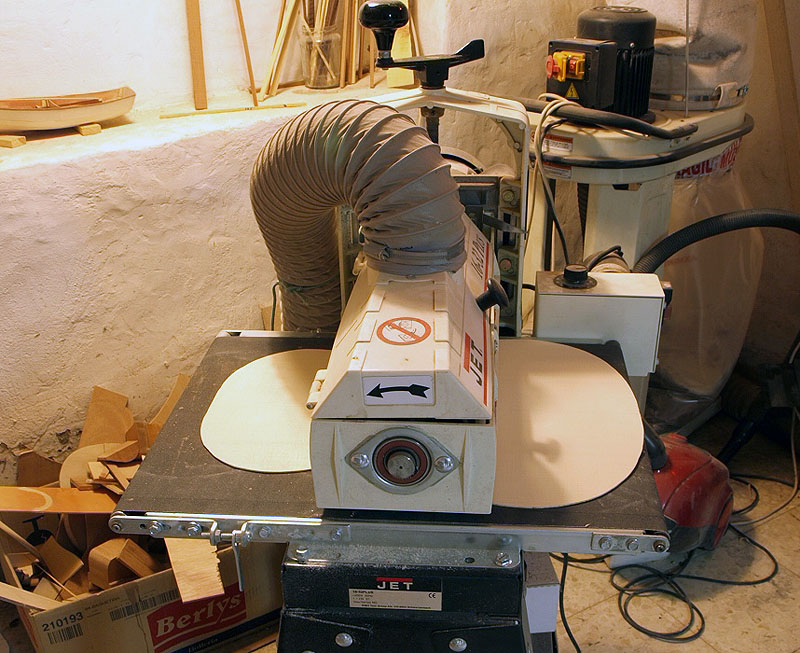
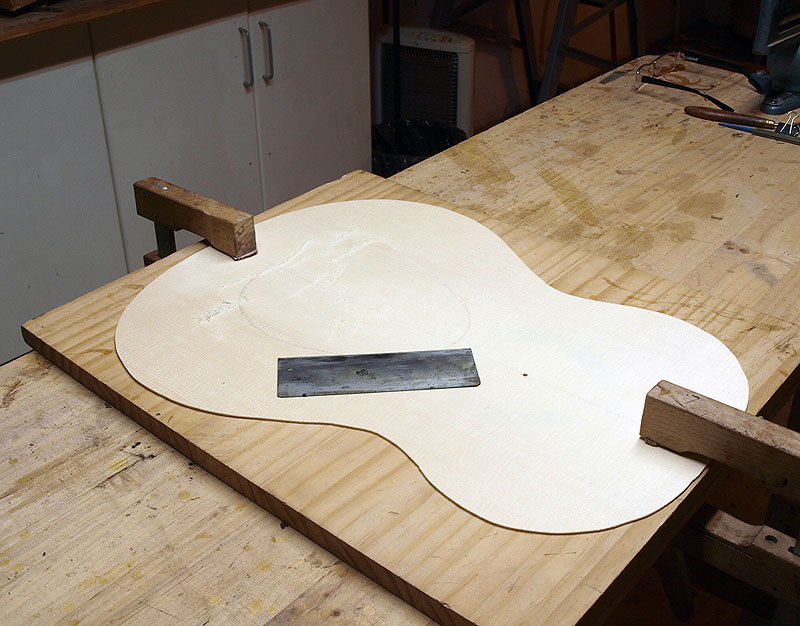
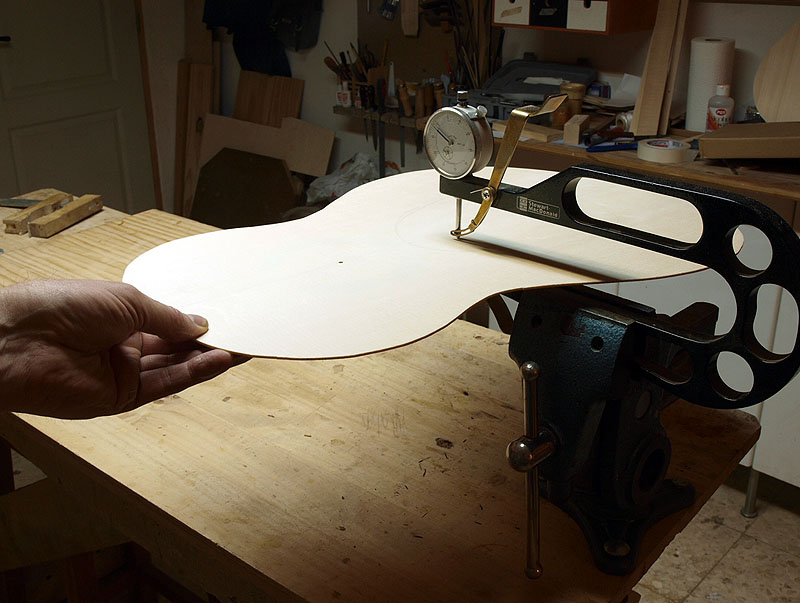
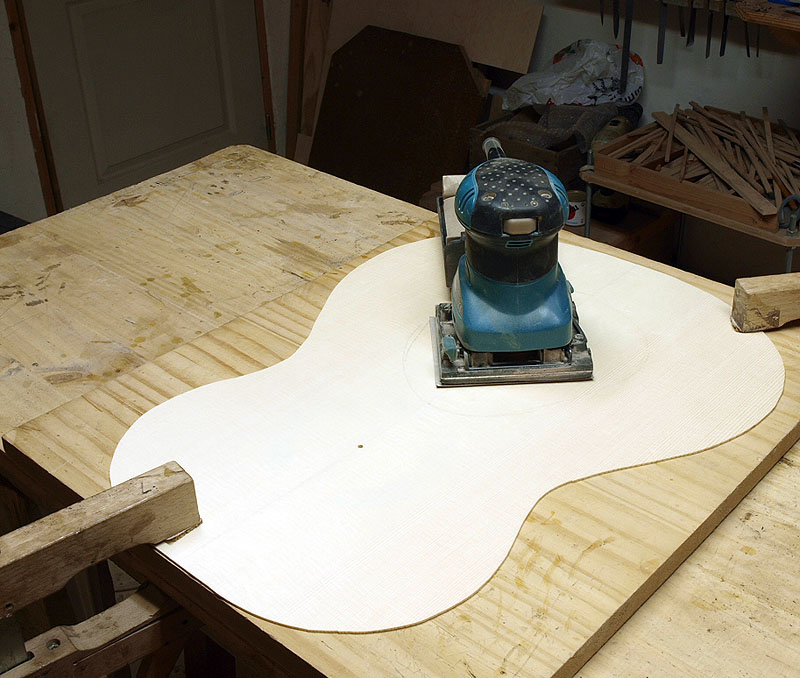
Images are resized automatically to a maximum width of 800px
|
|
|
|
